On April 11th, the Global Museum Directors Forum officially opened in National Museum of China, Beijing. More than 40 experts from worldfamous museums and 50-odd directors or delegates from Chinese museums atteneded the forum.
During the two-day-long forum, the attendees exchanged views on there sub-topics: "collection and exhibition exchange of museums along silk road countries", "construction of smart museum" and "diversity presentation of exhibition".
(photo by Yu Guanchen)
(photo by Yu Guanchen)
“collection and exhibition exchange of museums along silk road countries”
Tokyo National Museum (TNM)
Zeniya Masami, Executive Director of TNM firstly made a brief introduction of the museum. Currently TNM has a collection of about 120,000 pieces/sents, 89 national treasure-level culturalo relics and 644 important cultural relics. Collections such as bronze mirrors, teacups, Buddha statues have a close relationship to the Silk Road and cultural exchange. Director Zeniya said how to abosorb both eastern and western culture into Japanese culture had been a significant subject. He hoped that displaying those collection would help visitors understand how multiculture
(photo by Yu Guanchen)
The Geological Museum of China (GMC)
Yao Yichuan, director of GMC presented three main themes of GMC, which were collections, populization of science and scientific research. Since the branch is being constructing, he looked forward to the cooperation with both domestic and foreign museums in the furture.
Chinese Museums Association (CMA)
An Laishun, secretary and vice president of CMA presented the forum. He said the communication between museums had become more frequently and deeply, at the same time, the number of exhibition exchange rose, making the museum become the "folk ambassador" of international communication. In the past decade, the increasingly abundant international exhibition projects, which were an important part of the "folk ambassadors" of Chinese culture, could be regarded as the epitome of the internationalization of Chinese museums.In addition to the increased number, the exchange programs had also been expanded in the breadth. For example, China has taken an active part in international obligations in the protection of endangered cultural heritage and provided temporary shelter for endangered cultural heritage.The ancient history and colorful traditional culture had brought the feelings between Chinese people and people of other countries closer and easier to connect.
National museum of Myanmar (MMM)
Nang Lao Ngin from MMM introduced culture policies of Myanmar in protecting and inheriting cultural relics as well as presenting the measures and cooperations. She also referred to the mission of MMM, that is becoming the center of learning Burmese culture and cilvilization progress. In order to reach the goal, MMM had displayed exhibitions related to history, anthropology, archeology, etc. She said in the future, MMM would continue promoting international exchange, such as the upcoming exhibitions on myanmar culture in the Czech republic and busan, South Korea. In her opinion, how to make the culture sustainable development and how to play an important role of culture should be actively considered by the people in the museum, which would also promote the further development of the museum.
China National Silk Museum (CNSM)
Zhao Feng, Director of CNSM made a speech focus on silk-road-themed exhibitions and international cooperations among museums. Zhao said the silk road has always been an significant theme of exhibition, even though currently there was no complete statistics reflect the number of such exhibitions, some general types could be concluded. He took CNSM as an example, exhibitions in which correlated with silk, textiles and the Silk Raod. In his point of view, those exhibitions needed close cooperation, including research and protection of collections, curation and design of exhibitions, and organization and implementation of the whole project.
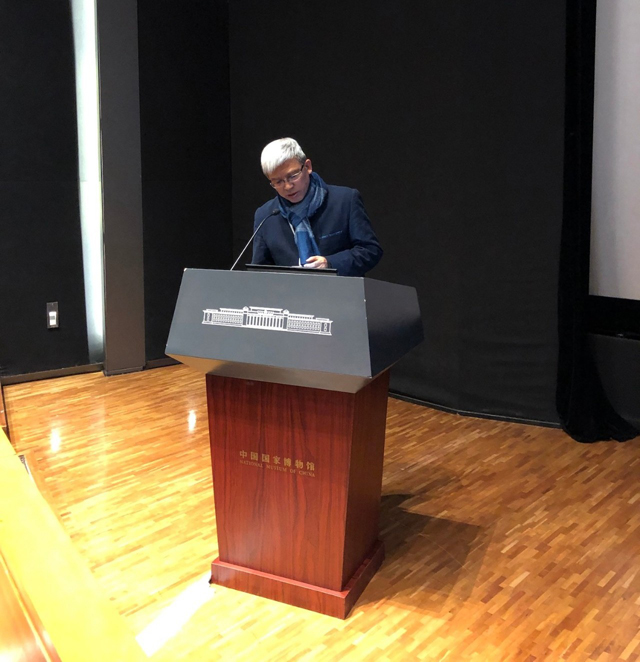
National Museum of Korea (NMK)
BAE Kidong, director of NMK talked about the relationship between the Korean peninsula and the eastern silk road from a museum perspective. He believed that the silk road was a symbol of cultural exchanges and shared prosperity between different cultures and regions, and a large number of unearthed cultural relics and historical documents also proved that the Korean peninsula, as an important part of the silk road, conducted cultural exchanges and business exchanges with other civilizations. NMK is preparing for a number of silk road themed exhibitions to promote exchanges with international museums to better understand the world's diverse cultures.
Fujian Museum
Wu Zhiyue, director of Fujian Museum explained the strong cooperation for preparing the exhibition Splendor of Maritime Silk Road. The exhibition firstly unveiled in 2013, after a two-year-long cooperation with 45 museums in 7 costal provinces, displaying selected collections of Maritime Silk Road as well as academic achievements. The exhibition had been displayed in 11 domestic provinces and 20 oversea countries.
China Science and Technology Museum (CSTM)
Yin Hao, director of CSTM expressed elaborated on the practice and thinking of treavelling exhibitions for popularization of science. With "Experience science, Enlightening innovation" as the theme, CSTM had developed a series of treavelling popular science exhibitions, through the popular science exhibits and films, providing science resources, education services to Silk Road along countries.
Liechtenstein Landes Museum
Rainer Vollkomer, director of Liechtenstein Landes Museum shared his opinions on
cooperation between museums, the crucial part of which were understanding and communication. As a place for cultural exchanges, museums should make full use of their advantages to promote exchanges between different cultures, so as to promote mutual understanding and respect among people from different cultural backgrounds and thus eliminate prejudice, violence and conflicts. Therefore, museums of different countries should strengthen their cooperation with each other to create a better life for people.
Shanxi History Museum
Qiang Yue, director of Shanxi History Museum introduced international cultural heritage cooperation with countries along the slik road. First was the application of "silk road: changan - tianshan corridor network", which was included in the world heritage list in 2014 and declared jointly by China, kazakhstan and kyrgyzstan. Next was cultural exchanges with countries along the silk road, including a series of activities such as exhibitions, "One Belt And One Road" friendship alliance of national museums, lectures and archaeological excavations. Through years of exchanges and cooperation, Qiang also put forward his own thinking: exchanges and cooperation need common aspirations and goals, but also need the power and effect of joint, in order to achieve the protection and inheritance of the heritage.
Guizhou Provincial Museum
Chen Shunxiang, director of Guizhou Provincial Museum delivered a speech on "museums and diversity" to discuss how museums can play a pivotal role in the face of cultural conflicts and the fading of traditions.The UNESCO report focusing on cultural diversity and intercultural dialogue pointed out that cultural diversity is an inherent human resource and a great asset. At the same time, the museum had to face the characteristic crisis, the collection crisis, the system crisis and so on. In this regard, Chen shunxiang believes that museums should refer to UNESCO's proposal on the protection and strengthening of museums and collections, as well as their diversity and social role, so as to promote museums to break the crisis and play their own role.Chen also shared the practices of guizhou provincial museums, explored how to connect museums with the world from the aspects of exhibitions, activities, culture and innovation.
Gansu Provincial Museum (GPM)
Jia Jianwei, director of GPM introduced the basic situation of gansu provincial museum. As the hub of the silk road, Gansu Province has many splendid historical and precious cultural relics, reflecting the integration and collision of eastern and western cultures. GPM also made use of this advantage to launch many silk road theme exhibitions. Jia hoped to strengthen cooperation with neighboring regions and launch more wonderful exhibitions in the future.
In the seminar, the director of the National Historical Museum of Belarus, president of the French association for intercultural exchange, professor from the national museum of Warsaw, Poland, director of Qinghai Provincial Museum and director of Macau Museums made speeches as well.
“construction of smart museum“
China National Museum of Women and Children
Yang Yuan, deputy director of China National Museum of Women and Children discussed how smart museum came into being, services of smart museum, and the system of smart museum. Examples of smart museum were shared such as Hainan Museum and Chongqing China Three Gorges Museum.
Lithuanian National Grand Palace Museum
After introducing the general situation of the museum, the spokesman of the national palace of the grand duke of Lithuania showed the intelligent museum construction and service of the museum to the participants from the aspects of building, interactive concept and technology.Among them, the spokesman paid special attention to the intelligent service of the museum, and introduced a series of measures carried out by the Palace Museum, such as holding 3D light show, adopting VR technology to display and opening to the public.
Chongqing China Three Gorges Museum
Cheng Wuyan, director of Chongqing China Three Gorges Museum said the construction of the smart museum will go through four stages: informatization and paperless office; digitization, the digital preservation of cultural relic resources; intellectualization, the technical support for machines to acquire knowledge; the final stage, during which the museum and society to achieve a high degree of integration. Most museums were only in the stage of "digitalization". As for how to promote the construction of smart museum, he thought it was necessary to achieve standards specification construction, perfect the construction of infrastructure facilities, and promote the construction of museum awareness, large master data mining analysis ability construction
China National Museum (CNM)
Shan Wei, secretary of the party committee of CNM, it had been a global trend for museums to build smart museum. At the same time, museums had become a "testing field" for new technologies like phisical information system, big data, cloud computing, AI, and VR/AR. In 2014, the state administration of cultural heritage of China supported seven provincial-level museums as pilot units, and since then, a series of practical explorations of Chinese smart museums have been launched. However, in the process of exploration, Chinese museums are also faced with many problems and challenges, such as the lack of unified standards, the difficulty in adapting the development concept and traditional thinking of traditional museums to the rapid development of smart museums, insufficient investment in talents and unbalanced development.In the future construction of smart museum, the establishment of unified standards, cultivation of talents and exchanges and cooperation among museums should be strengthened.
National Museum of Australia
Mathew Trinca director of National Museum of Australia described their quest to build smart museum. He believed that the intelligent service of the museum should be reflected in all aspects of the museum, including architecture, exhibitions and educational activities, so as to promote the close relationship between the audience and the museum. In his opinion, a smart museum should provide multiple channels for the audience to participate, for example, expanding exhibition forms and strengthening cooperation with the community, so as to establish a two-way dialogue between the museum and the audience and make the museum more intimate with the audience.
Delegates from Shanghai Jiao Tong University Qian Xuesen Library, Museum of the Mausoleum of the Nanyue King and UNESCO also participated in the discussion.
diversity presentation of exhibition
British Museum
Hartwig Fischer, director of British Museum introduced the plan and practice behind the exhibition "Virtual pilgrimage: reimagining India's Great Shrine of Amaravati". The amaravati temple is one of the oldest, largest and most important buddhist monuments in ancient India. Through this exhibition, visitors could explore the significance of the temple and learn about the pilgrims who funded its construction. In the exhibition, the images of pilgrims portrayed in the building would be recreated by actors and projected onto the wall. Viewers could use their smartphones to interact with the pilgrims and explore the great stupa in detail, and learn more about the power of ancient Indian funders.

Te Papa (Museum of New Zealand)
Geraint Martin, director of Te Papa shared the exploration of diversity in exhibitions. Because of New Zealand's multi-ethnic cultural background, the exhibition at the national museum of New Zealand is also diverse, showing not only the culture of the indigenous Maori people in New Zealand, but also the life of the early European immigrants, as well as the geology and rare animals. In particular, Martin Shared the groundbreaking planning of the national museum of New Zealand for an exhibition on the first world war, which gave the audience a new understanding of the war through immersive experiences and different narrative perspectives.
Capital Museum
Han Zhanming, director of Capital Museum (Beijing Museum, China) focused on the exploration of diversity in exhibitions as well, especially reflecting in permanent exhibitions, specialized theme exhibitions and temporary exhibitions. Exhibitions in Capital Museum were divided into three series: appreciation of Chinese culture, understanding of history background and learning from foreign culture.
In the seminar, directors/deputy directors from National museum of Pakistan, National museum of Russian history, National museum of Bulgarian history, Riga art museum(latvian national art museum), Oman national museum, Dizon National Museum of Culture and History, Museum of Cultural History(South Africa), Quai Branly Museum, National historical Museum of Romania, Virginia Museum of Art, Hebei Museum, Baoji Bronze Museum, Anhui Museum, Tang West Market Museum, Hubei Museum, Hunan Museum, , made speeches as well.
The two-day forum not only deepened the friendship between the participating museums, but also facilitated a number of substantial cooperation intentions.
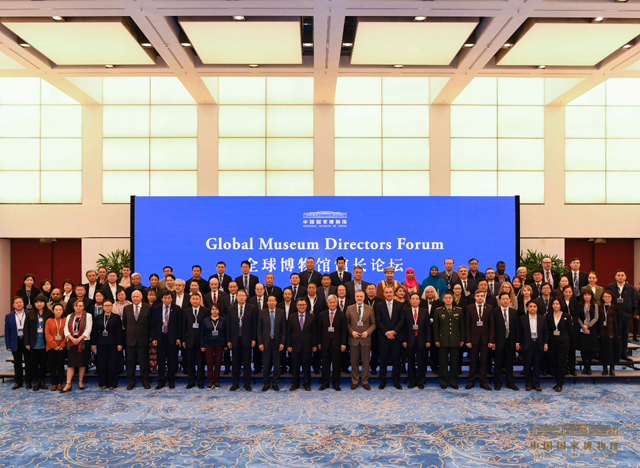
(photo by Yu Guanchen)
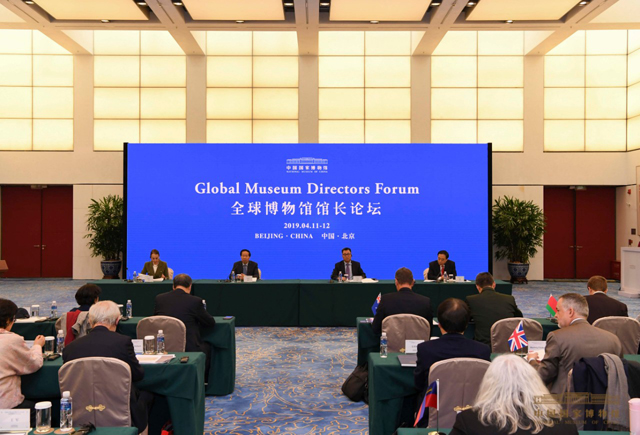
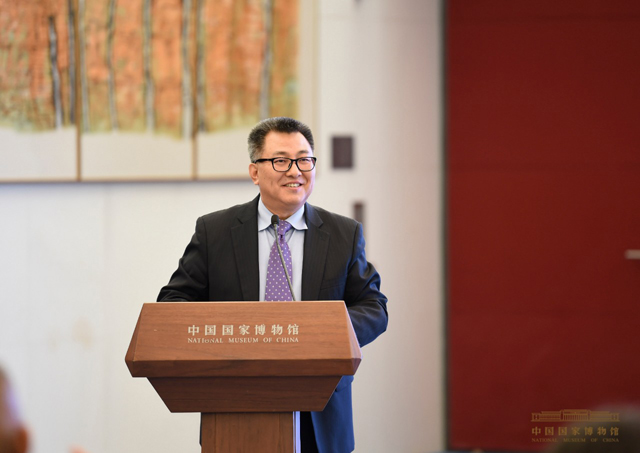
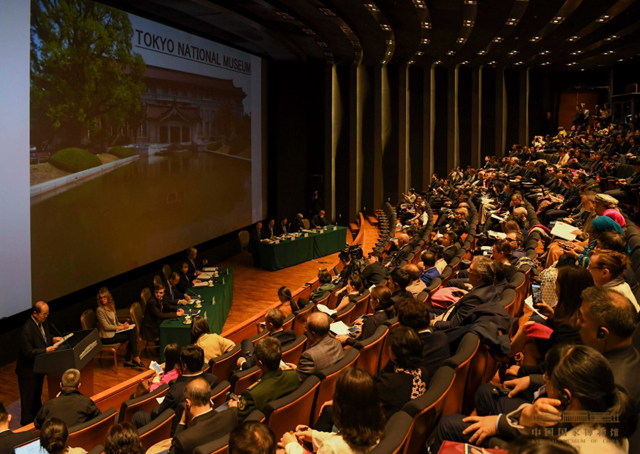

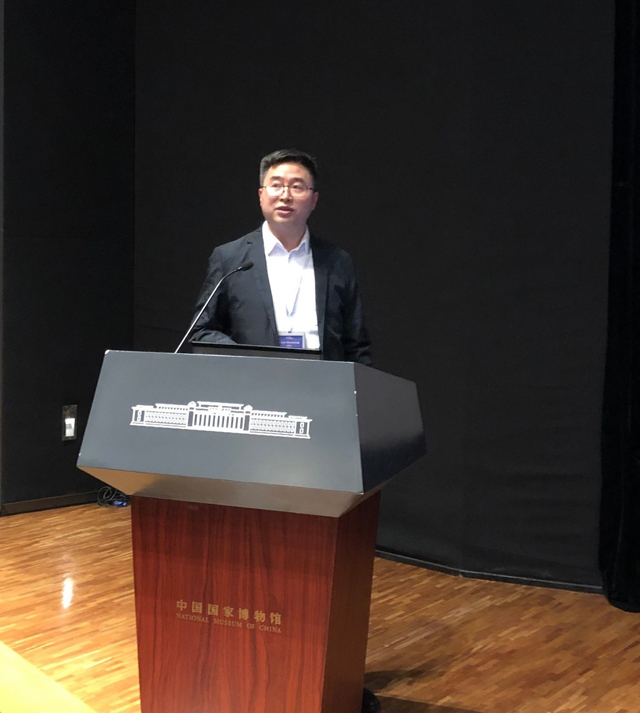
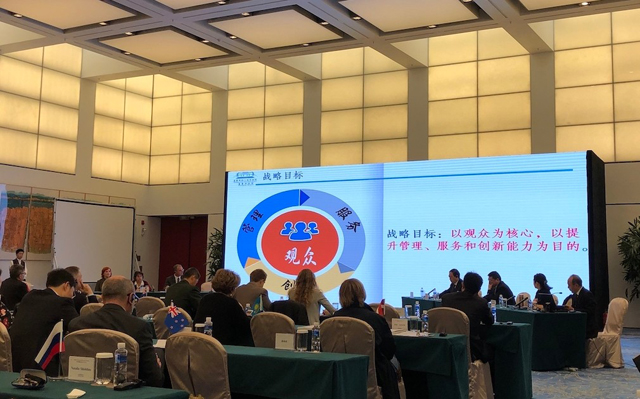
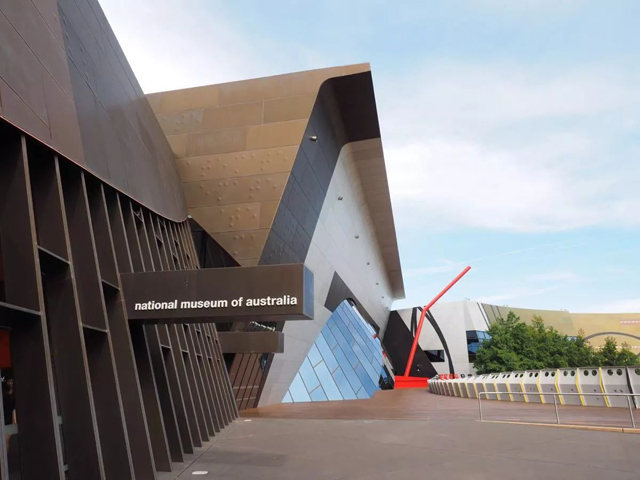


 Pay attention to us
×
Pay attention to us
×